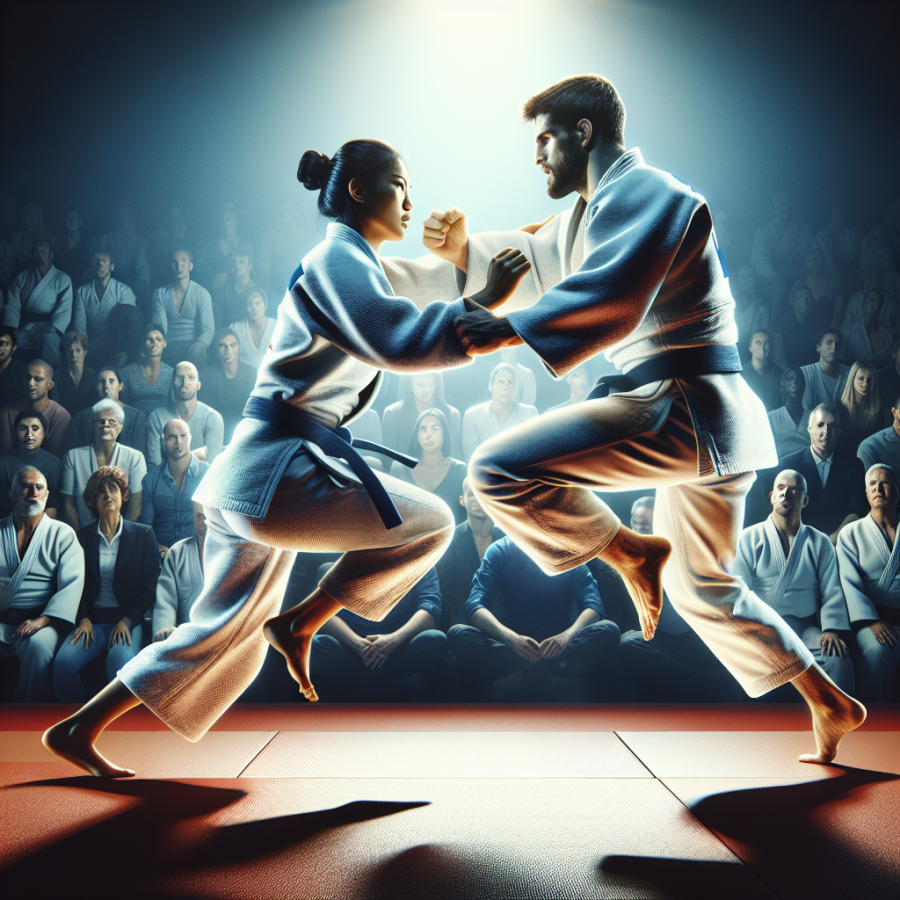Diving Deep into Judo: Techniques, Training, and Traditions
Judo, a traditional Japanese martial art and modern Olympic sport, offers a fascinating study of techniques, training, and traditions. A deep look into these elements provides unique insights into the discipline that goes beyond the basic idea of throwing an opponent to the ground.
In terms of techniques, Judo can be divided into two groups: Nage-waza (throwing techniques) and Katame-waza (grappling techniques). The former involves methods of throwing an opponent from a standing position, while the latter involves techniques for controlling an opponent on the ground. Each technique is designed to exploit leverage and off-balance your opponent effectively. They are designed not only to teach students how to defeat an opponent but also to educate them about maintaining their balance and coordination.
Detailed training in Judo is crucial to mastering these techniques. Training usually consists of three components: physical conditioning, practicing techniques, and Randori or free practice. Physical conditioning improves strength and flexibility. Practice techniques focus on perfecting individual moves, and Randori allows students to apply these techniques in a match-like situation. Importantly, Judo encourages continuous learning and improvement, often described by the Japanese term 'Kaizen'.
Competition is another significant aspect of Judo training. It not only provides a platform for Judo practicers to test their skills but also promotes values like respect and sportsmanship. During competitions, Judokas (Judo practitioners) are required to bow before and after a match to show respect for their opponents and the sport.
One cannot fully explore Judo without understanding its profound traditions. Rooted in the Japanese culture, it promotes principles such as 'jita kyoei' (mutual welfare and benefit) and 'seiryoku zenyo' (maximum efficiency, minimum effort). These principles not only form the philosophical backbone of Judo but also guide the moral conduct of its practitioners.
Moreover, Judo follows a ranking system symbolized by different colors of belts. New students begin with a white belt and progress to various colored belts before reaching the black belt, indicating mastery in the sport. This system not only serves as a way to rank students based on their skills but also promotes a sense of achievement and helps in boosting their confidence.
Observing the traditions, techniques, and rigorous training in Judo, it becomes clear that this discipline involves more than just physical combat.
Read also:
Discovering the Top Soccer Cards to Add to Your Collection
Understanding Judo: The Intricate Fusion of Art and Discipline
Judo is a renowned martial art hailing from Japan, recognized by its distinctive use of throws and grappling techniques. However, one might wonder how such a physically intense discipline could be likened to an art form.
Judo, in its true essence, transcends the boundaries of mere physical combat. Its quintessence lies in the intricate fusion of grace, technique, and discipline, much akin to an exquisite dance, a beautiful yet lethal dance of warriors.
Judo's foundations are rooted deeply in the principles of respect, etiquette, and discipline, that are embodied not only during combat but are also carried into practitioners' everyday lives. From the ceremonious act of bowing before and after combat, to being humble in victory and gracious in defeat, these underlying principles help foster a strong sense of moral character and resilience among judo practitioners.
Precise and swift movements, combined with periods of intense, explosive power, create a dynamic rhythm that is uniquely identifiable to judo. Mastering these rhythms and combat sequences takes years of diligent practice and mental fortitude; the path to mastery is not an easy one. It requires an indomitable will, a level of dedication that transforms the sport into something more profound, more personal – a discipline, a way of life.
The journey to master the art of judo necessitates a deep understanding of the various techniques, their applications and the philosophy behind them. From throws (Nage-waza), to groundwork techniques (Katame-waza), and striking techniques (Atemi-waza), each method requires meticulous attention to form and execution detail.
One of the distinguishing features of judo is its emphasis on using opponent's force against them. This aspect demonstrates how judo is not solely about physical strength but underscores the significance of strategy and mental acumen. It instills a heightened levele of mental agility and resilience that is applied both individually during combat and collectively during training.
Yet, there's more to judo than just combat and techniques. The philosophical teachings, influenced heavily by Shinto and Buddhism, form a significant aspect of the judo discipline. The principles of Jigoro Kano, the founder of judo, revolve around the maximization of efficiency and mutual welfare and respect. These teachings place strong emphasis on personal growth, self-improvement, and contribution to society, making judo a discipline that nourishes both the body and the mind.
Training in judo comes with its challenges.




